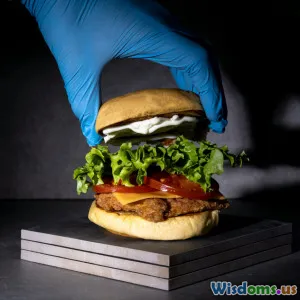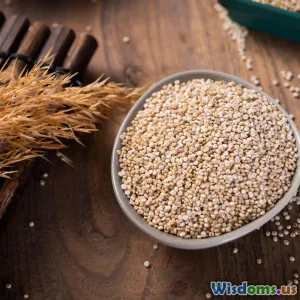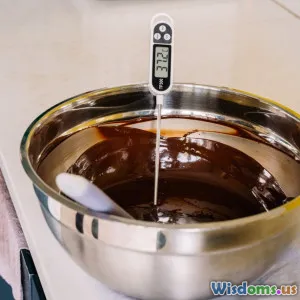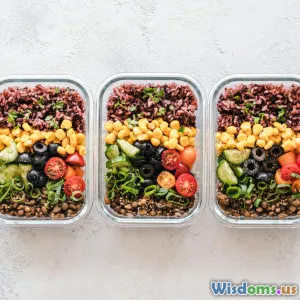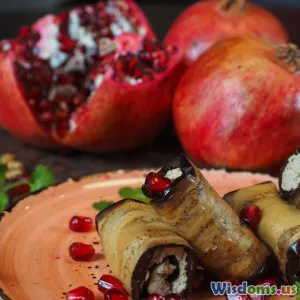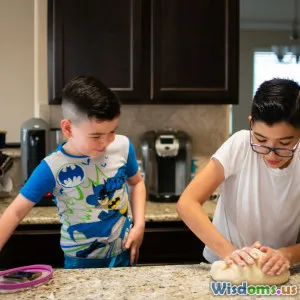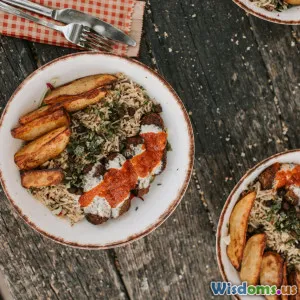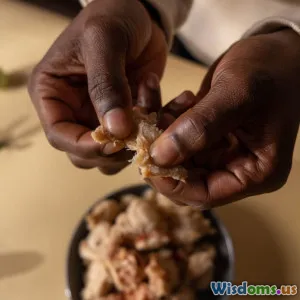
How to Master Seitan for Perfect Plant Based Dishes
8 min read Master the art of making seitan with this in-depth guide for delicious plant-based dishes. (0 Reviews)
How to Master Seitan for Perfect Plant-Based Dishes
Seitan, often referred to as "wheat meat," has captivated plant-based chefs and food lovers alike for centuries. Known for its meaty texture and protein-packed profile, seitan serves as a powerful ingredient that can transform simple plant-based meals into wholesome, flavorful feasts. But mastering seitan is more than just mixing flour and water—it’s an art and a science combined. Whether you are a vegan, vegetarian, or simply exploring new culinary skills, unlocking the mastery of seitan can elevate your kitchen game to a whole new level.
Why Seitan? Understanding Its Appeal
Seitan's appeal lies in its versatile, chewy, and fibrous texture and its capacity to absorb flavors exquisitely. It is one of the richest plant-based protein sources, boasting roughly 21 grams of protein per 100 grams, rivaling many animal-based proteins. Originating from East Asia, it has spread worldwide as a staple for those seeking sustainable and cruelty-free alternatives.
Chef and vegan cookbook author Chloe Coscarelli says, "Seitan offers an incredible blank canvas—it can be anything from a succulent steak to shredded jerk chicken—making it a vital ingredient in plant-based cooking."
Section 1: The Fundamentals—What You Need to Know
Selecting the Right Flour
The base of seitan is gluten — the protein in wheat that gives bread its elasticity. Choosing the correct flour is crucial:
- Vital Wheat Gluten Flour: Ideal for beginners and the most reliable, as it is already rich in gluten.
- All-Purpose Flour + Washing Method: Traditional seitan can be made by washing out starch from all-purpose flour dough to isolate gluten, though this is more labor-intensive.
For best results and ease, using vital wheat gluten flour is recommended.
Understanding Gluten Formation
When flour is mixed with water, gluten proteins link together, creating a stretchy, elastic network. Kneading develops this network further, essential for seitan's distinctive chewy texture. The more you knead, the chewier and denser your seitan becomes.
Section 2: Preparing Seitan – Step-by-Step
Basic Ingredients
- Vital wheat gluten flour
- Water or vegetable broth for more flavor
- Flavor enhancers like soy sauce, nutritional yeast, garlic powder, onion powder, and spices
Step 1: Mixing
Mix vital wheat gluten with your liquid and spices until you form a dough. Avoid overhydrating the dough; usually, a ratio of about 1:1 water to flour by volume works well.
Step 2: Kneading
Knead the dough for 5-10 minutes. As you do this, the dough toughens and becomes elastic. This process is similar to bread dough kneading but often shorter.
Step 3: Shaping
Shape the dough into logs, cutlets, strips, or bite-size pieces depending on your recipe. Smaller sizes cook more evenly and absorb flavors better.
Step 4: Cooking Methods
There are multiple common ways to cook seitan:
- Simmering/Boiling: Gently simmer seitan pieces in broth for 45-60 minutes. Avoid boiling vigorously to prevent a spongy texture.
- Steaming: Steaming preserves a firmer, meatier bite.
- Baking: After boiling or steaming, some recipes call for baking to develop crust and additional texture.
Tips for Flavor Infusion
Always cook seitan in well-seasoned broth. Classic broth ingredients include soy sauce, garlic, ginger, mushroom powder, and herbs. This step is where seitan truly gains its depth and complexity.
Section 3: Advanced Techniques for Restaurant-Quality Seitan
Experimenting with Textures
- Low Kneading + Longer Cooking: Creates a softer, more tender seitan, suitable for dishes that mimic chicken.
- High Kneading + Shorter Cooking: Results in denser seitan, great for beef-like textures.
Incorporating Additional Ingredients
Adding chickpea flour or flaxseed meal can change the texture and nutritional profile. For example, chickpea flour can bind water and create a moister seitan.
Marinating After Cooking
Since seitan absorbs flavors well, marinating cooked pieces enhances taste dramatically. Use flavor-packed marinades such as spicy barbeque, tangy teriyaki, or smoky chipotle.
Common Mistakes and How to Avoid Them
- Overcooking: Results in rubbery or spongy seitan.
- Insufficient Kneading: Produces crumbly seitan that falls apart.
- Poor Broth Quality: Leads to bland seitan regardless of effort.
Section 4: Putting Seitan to Work – Recipe Inspiration
Classic Seitan Stir-Fry
Sliced seitan seared with colorful vegetables and a ginger-soy sauce. This highlights seitan’s ability to mimic beef or chicken in stir-fries.
Seitan ‘Chicken’ Salad
Shredded seitan mixed with vegan mayo, celery, and herbs – a perfect protein-packed sandwich filling.
BBQ Seitan Ribs
Seitan logs steamed, sliced into ribs, brushed with BBQ sauce, and baked or grilled to perfection. Offers a smoky, hearty plant-based alternative.
Seitan Stew
Thick chunks simmered with root vegetables in a rich vegetable broth, ideal for comforting meals.
Final Thoughts: Why Mastering Seitan Matters
Mastering seitan opens up unparalleled culinary creativity for plant-based diets. Its adaptability makes it a cornerstone ingredient for those craving the texture and protein that meat provides, without sacrificing ethics or health. As food trends continue to embrace plant-based eating, this "wheat meat" proves that sustainability and taste can go hand in hand.
Inspired by culinary pioneers and backed by nutritional benefits, seitan mastery is both a rewarding skill and a delicious journey in plant-based cooking innovation. Embrace the challenge, experiment boldly, and transform your kitchen into a creative haven of high-protein vegan goodness.
"Seitan is not just food, it’s a craft—the foundation of many vegan dishes that satisfy without compromise." – Chef Chloe Coscarelli
Rate the Post
User Reviews
Popular Posts










